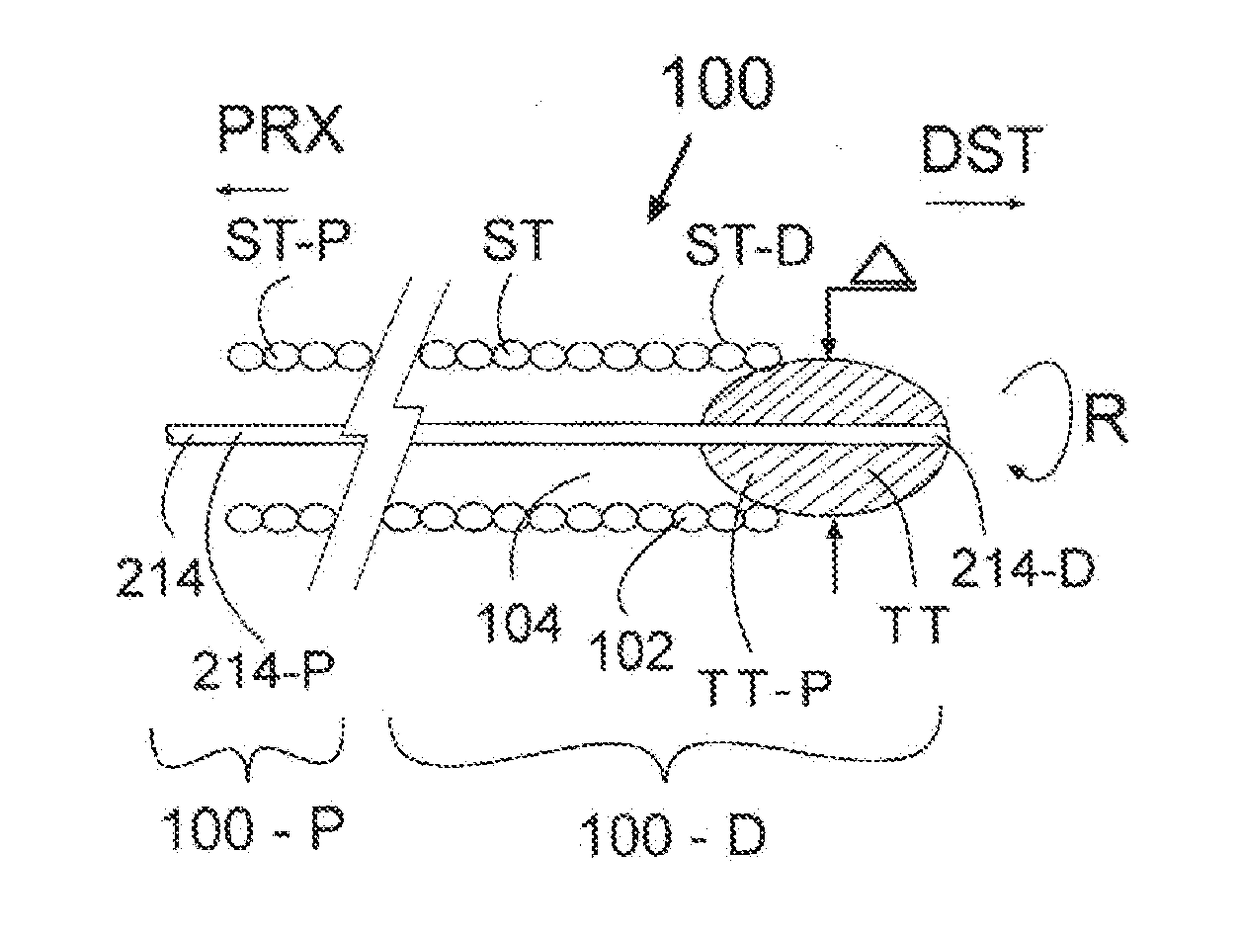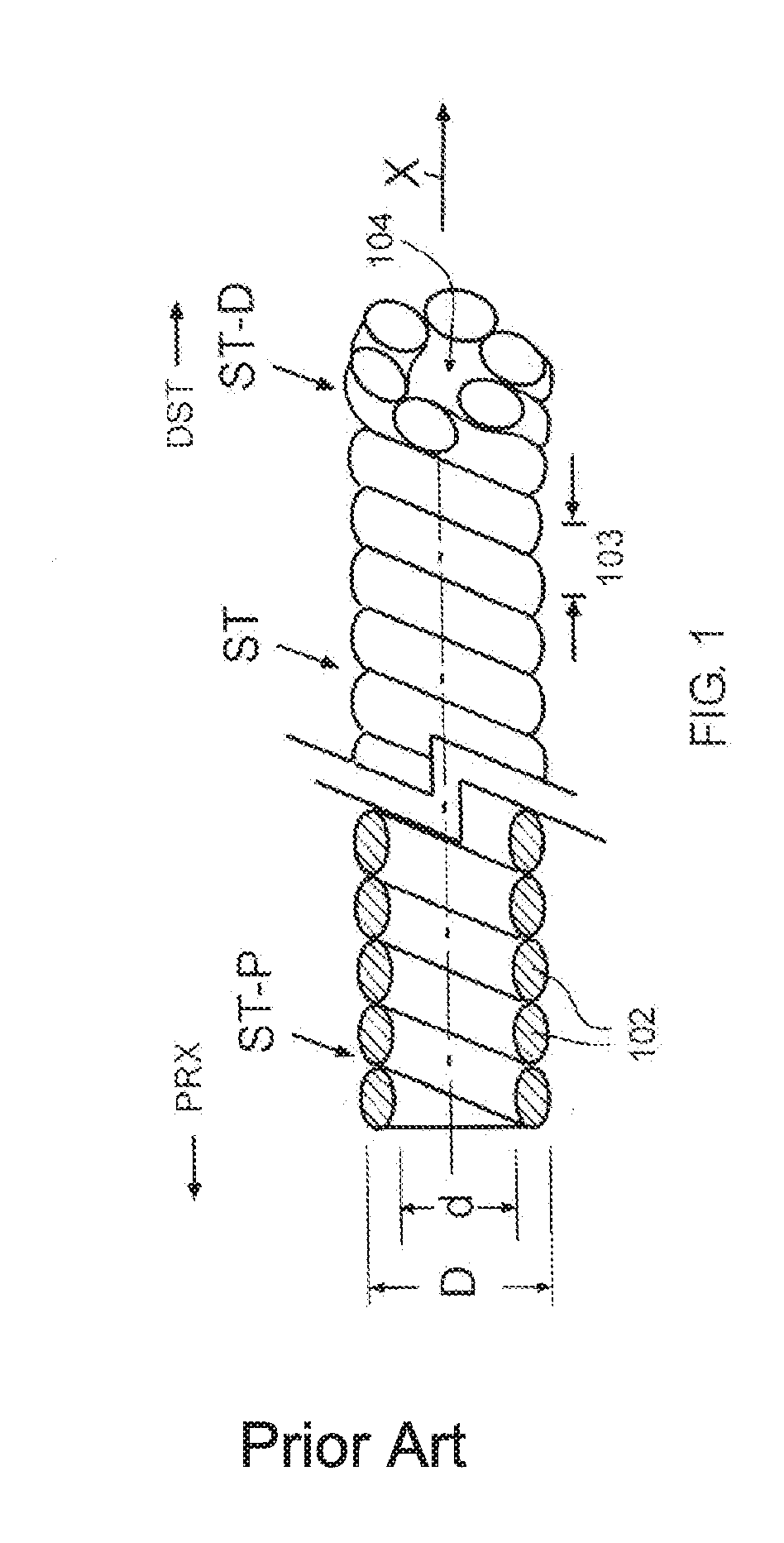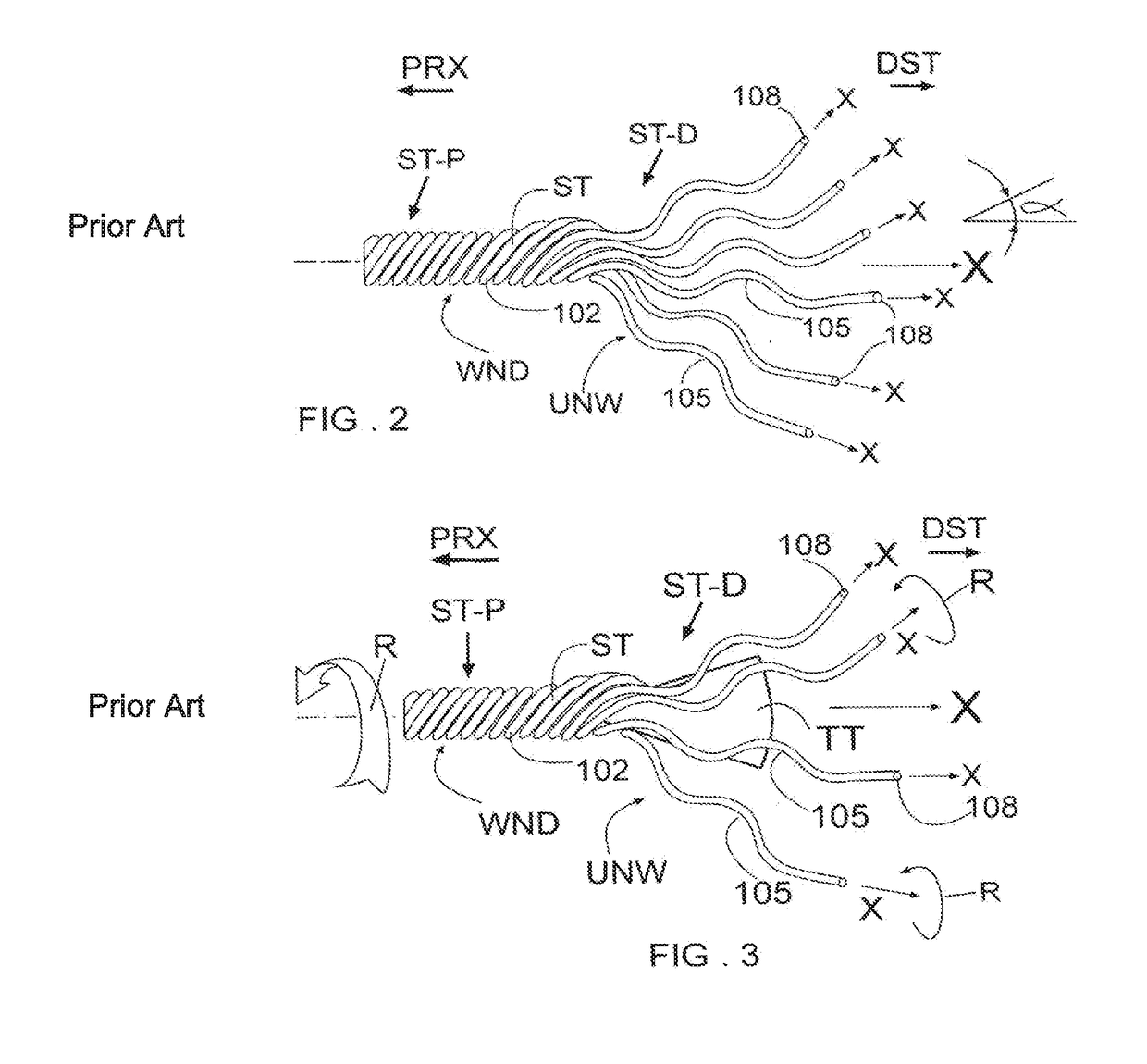Method system and fastener for anchoring a corpu
a technology of a method system and a fastener, which is applied in the direction of nails, medical science, surgery, etc., can solve the problems of rigid material forming the tip of the aspiration catheter, the need for a large lumen,
- Summary
- Abstract
- Description
- Claims
- Application Information
AI Technical Summary
Benefits of technology
Problems solved by technology
Method used
Image
Examples
embodiment 200
[0123]To use the embodiment 200 shown in FIG. 25, for anchoring of and into a corpus COR, the stranded tube ST has to be engaged with the corpus and then unwound to liberate at least one, or a plurality, or the entirety of wound coiled thread(s) 102. Unwinding of the stranded tube ST liberates at least one, or a portion, or the plurality of the tightly prestressed helicoidal coiled and wound thread(s) 102. The wound threads 102 then separate and extend away from the stranded tube ST, possibly in radial direction, into unwound threads 105, as shown in FIG. 2. Parameters commanding the angle α of radial expansion of the unwound thread 105 may include the pitch distance 103, the material from which the stranded tube ST is made, the mechanical properties of the stranded tube ST such as dimensions and pre-stress of the threads 102, the shape of the tube tool TT, the configuration and the duct angle β of the tube tool thread ducts 117, 118, or 360, the exterior diameterΔ of the tube tool....
exemplary embodiment 200
[0126]An operator, not shown, may first navigate the exemplary embodiment 200 for engagement of the stranded tube ST with the corpus COR. Navigation requires handling and manipulation shafts well known to those skilled in the art, such as a guiding catheter for example, which shafts are configured to support both the stranded tube ST and the tube tool TT. The term engagement herein means disposition of the stranded tube ST in operative relation with the corpus COR. Once the stranded tube ST is navigated to the corpus COR and engaged as desired, the operator may firmly hold the wire 214 stationary with one hand while rotating the shaft handle 232 with the other hand. Rotation of the shaft handle 232 rotates the stranded tube ST that is distally coupled thereto. Unwinding of at least one, or a portion, or the plurality of the tightly stranded wound threads 102 in association with the tube tool TT is obtained by rotation of the shaft handle 232 in the winding direction of the stranded ...
embodiment 400
[0164]Reference is made again to FIG. 31. With the driver protrusions 138 inserted into the fastener slots 136, while the wire 214 is kept stationary, the distal portion 210-D of shaft 210 may be pushed distally to apply force via the shaft driver 134 and the driven ring 132 such that the stranded tube ST will be forced onto the tube tool TT. Rotation of the shaft 210 in the winding direction of the stranded tube ST will rotate the shaft driver 134, which in turn will rotate the driven ring 132 and cause the tube tool TT to unwind the wound threads 102 of the fastener 130. With appropriate engagement of the embodiment 400 with the corpus COR, unwinding of the fastener 130 will releases at least one, a plurality, or the entirety of the unwound coiled threads 105. As described hereinabove, the unwound coiled thread(s) 105 will be liberated for anchoring of and into at least one corpus COR.
[0165]To anchor the stranded tube ST of the embodiment 400 as a fastener 130 into at least one co...
PUM
 Login to View More
Login to View More Abstract
Description
Claims
Application Information
 Login to View More
Login to View More - R&D
- Intellectual Property
- Life Sciences
- Materials
- Tech Scout
- Unparalleled Data Quality
- Higher Quality Content
- 60% Fewer Hallucinations
Browse by: Latest US Patents, China's latest patents, Technical Efficacy Thesaurus, Application Domain, Technology Topic, Popular Technical Reports.
© 2025 PatSnap. All rights reserved.Legal|Privacy policy|Modern Slavery Act Transparency Statement|Sitemap|About US| Contact US: help@patsnap.com



